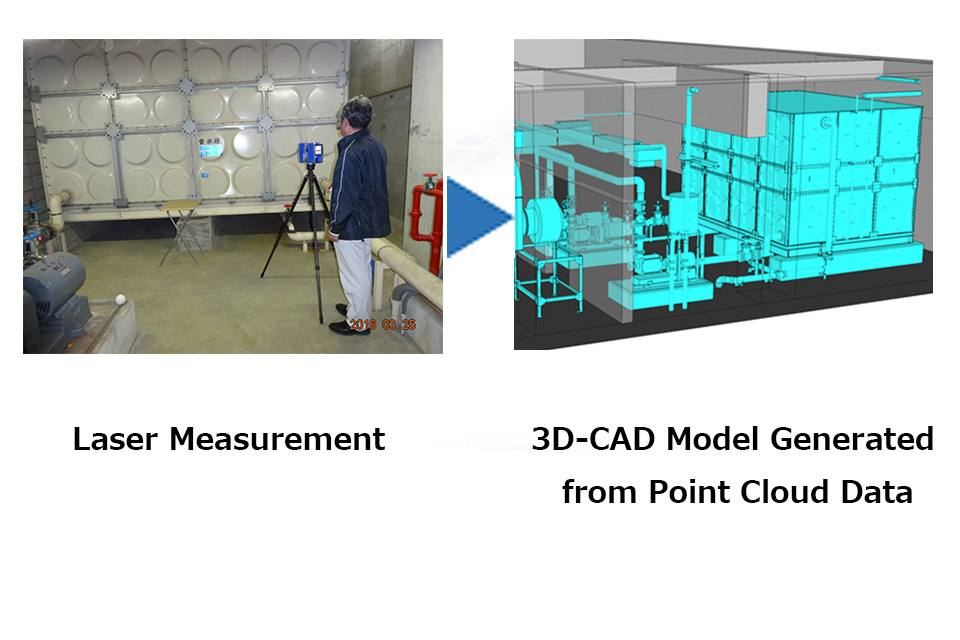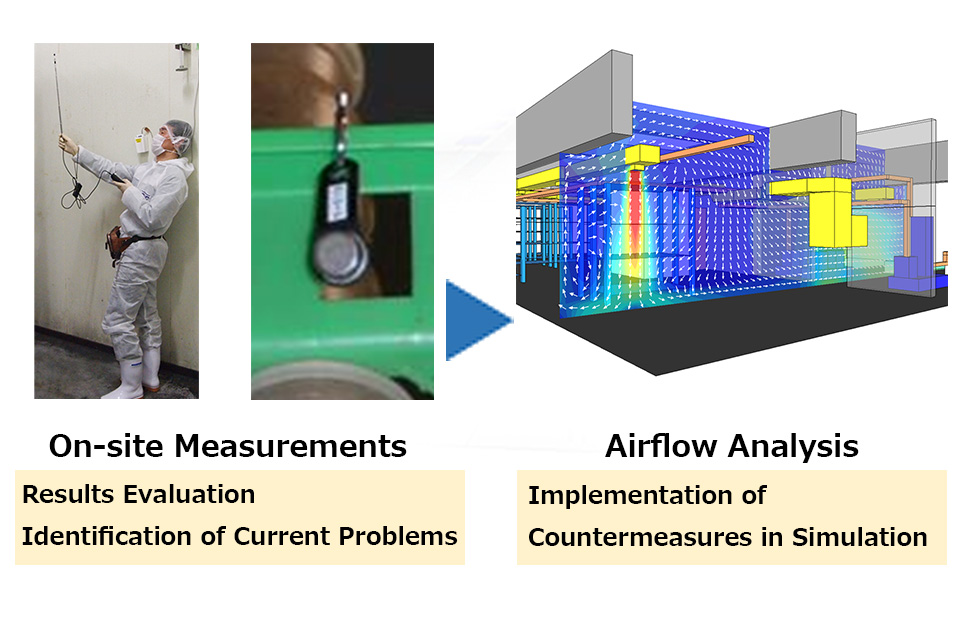Get insight into the spread behavior of smoke and temperature variations due to fires in plants, warehouses, and other buildings to use in examining problems and improvements to fire prevention and detection systems.
Our simulations identify the spread and intensity of forest fires to use in establishing hazard maps, evacuation routes, evacuation shelters, and fire-fighting plans.
Our airflow analyses can visualize and identify retention and other problems to easily examine potential countermeasures. These simulations can also track effects of moving objects and particle behavior as well as investigate other complex airflows.
Scope:
Airflow, temperature, dust, humidity, gas diffusion, mixing gases, retention time (age of air), moving objects, etc.
Applications:
Data centers (heat and energy-saving measures) and manufacturing plants (measures against heat, gas, smoke damage, and odors)
Arenas (enhancements to large spatial environments and natural ventilation) and equipment (optimization of duct configurations, bias flow measures, and wind tunnel testing facilities)
Clean rooms (retention/dust measures) and food plants (evaluations of exhaust measures and quality improvements)
Buildings (higher cooling water system efficiency/building wind measures) and medical facilities (measures to prevent the spread of infections)
All other airflow-related facilities
Our simulation analyses compare current and improved airflows to share the current phenomenon and easily visualize the impact of improvements.
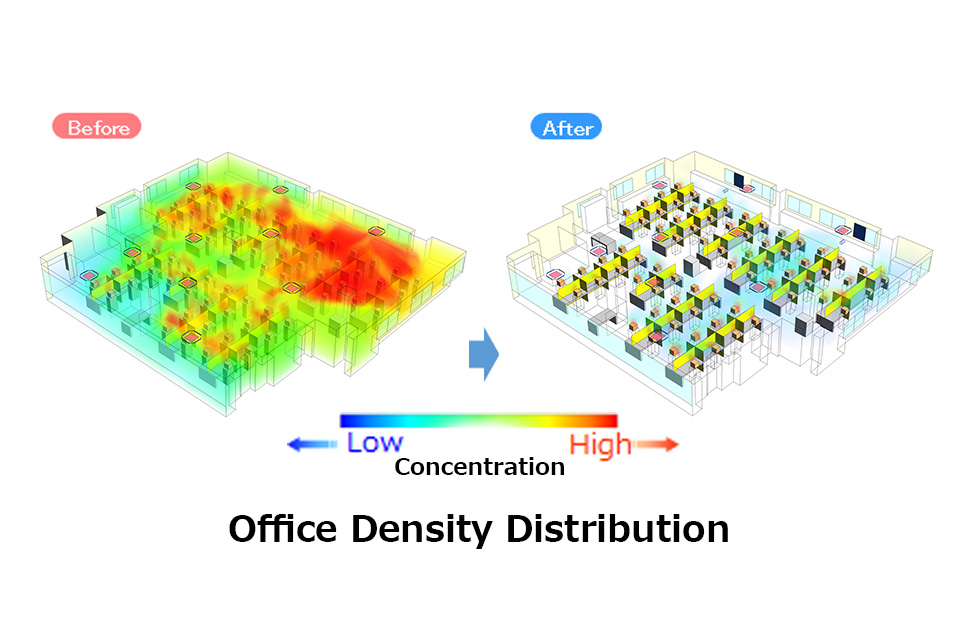
Water flow analyses not only simulate gas and liquid but also solids and liquids imitating carriers and other catalysts supports as well as vibrations to evaluate liquid surface and other behavior.
Scope:
Water flow, temperature, concentration of mixtures, time to replace water flow (age of water), estimates of bubble behavior, water level predictions, churning, etc.
Applications:
Water treatment facilities (aeration stirring basin/MBR treatment analysis), waterways (water level assessments during flooding), equipment (flow velocity behavior in pipes/cavitation prevention measures), buildings (assessment of water heat storage tank efficiency) power plants (overflow measures inside water intake chambers, dam water level assessments), marine vessels (assessment of ballast water treatment systems), and all other water flow-related facilities
Structural analyses can obtain the displacement, strain, and stress acting on structures due to various loads. In addition to evaluating the geometry, safety, and other aspects of structural designs, these simulations can be used to identify and review measures against the causes of accidents in the event of trouble.
The analyses can also link the influence between multiple physical phenomena, such as heat transfer, vibrations, and fluid dynamics.
Scope:
Stress, displacement, thermal stress, failure strength, eigenfrequencies, rotor dynamics, fatigue, rigid-body motion, etc.
Applications:
Confirmation of duct and pipe soundness, combustion furnaces and other thermal deformation measures, measures against damage due to resonance, bolt strength analyses, fatigue measures, deformation analysis using large loads, and all other structure-related equipment
This is one example of an analysis that takes into account the elasto-plasticity effect of materials when analyzing openings using loads of flanges tightened using bolts.
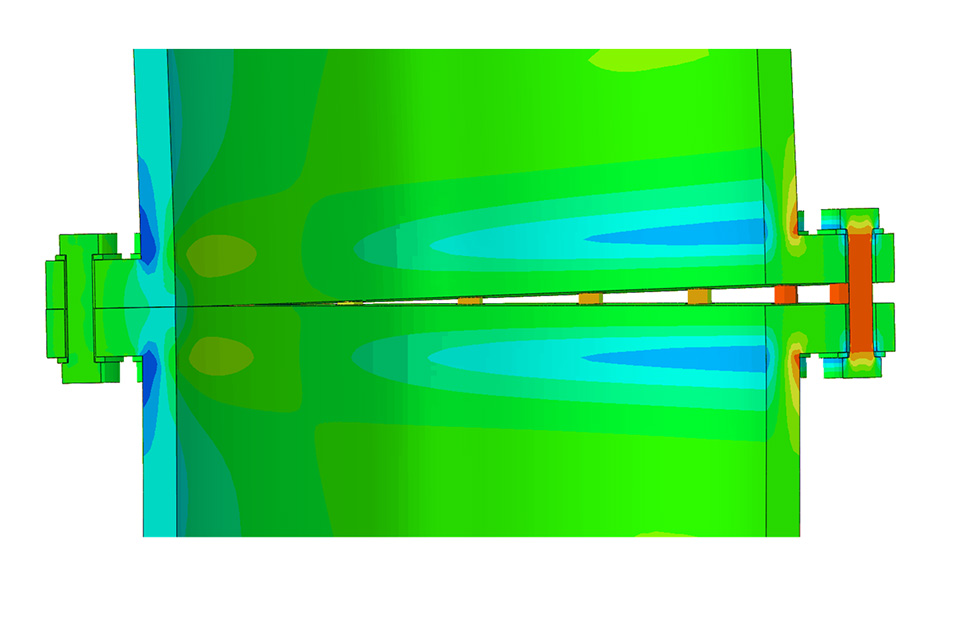
This is one example of obtaining the deformation behavior when freely dropping a steel frame on the ground using a collision analysis.
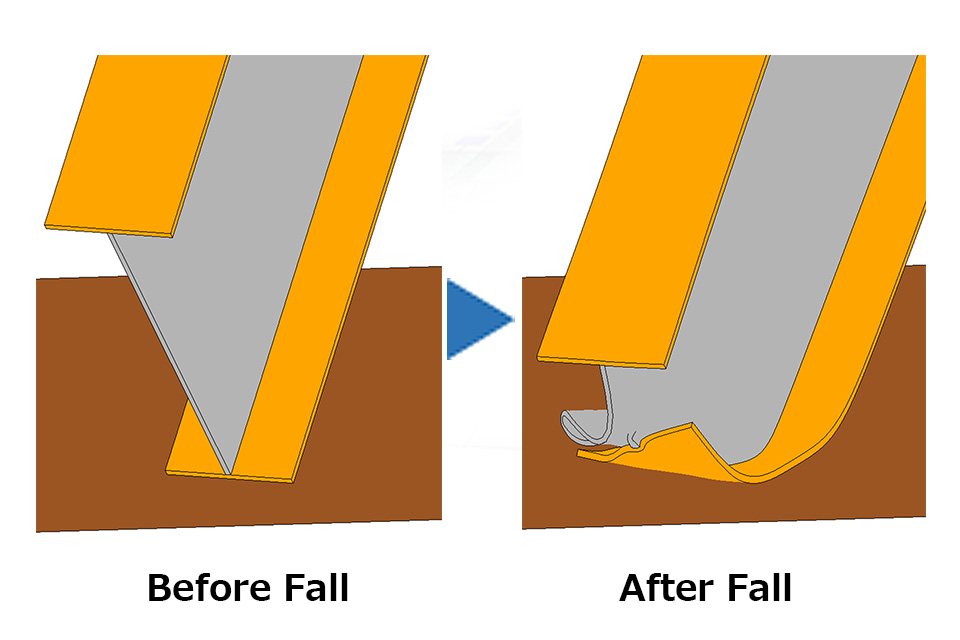
This is one example of a deformation and residual stress assessment when welding steel plates.
This is one example of a time history response analysis of earthquakes to reproduce and use the displacement and stress of garages to make reinforcements.
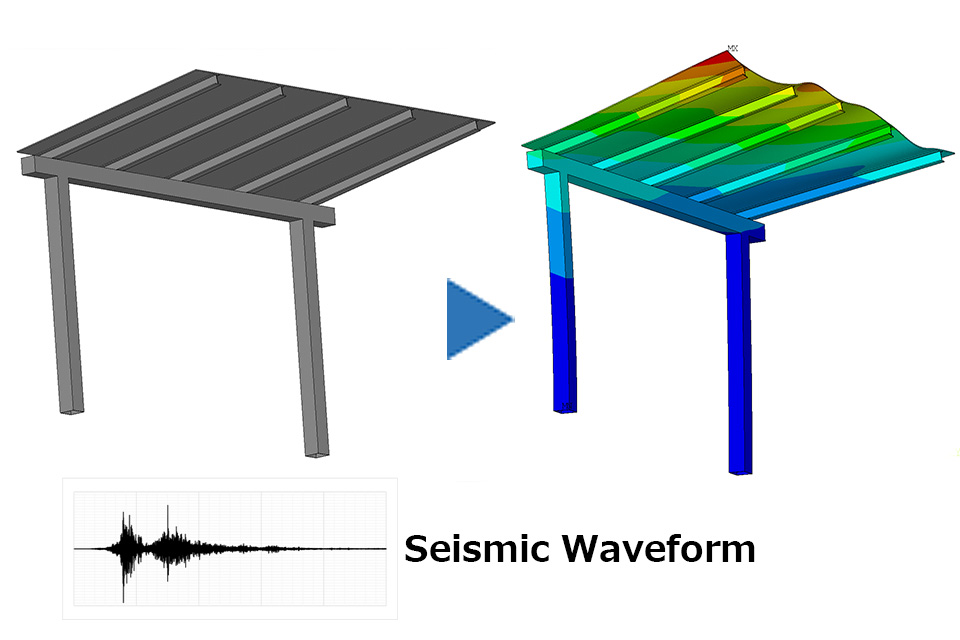
Strength and eigenvalue analyses of structures can evaluate strength and improve the structure.
Even if the structures have a complex geometry, we can perform these analyses at minimal cost by modeling only the parts of interest causing problems.
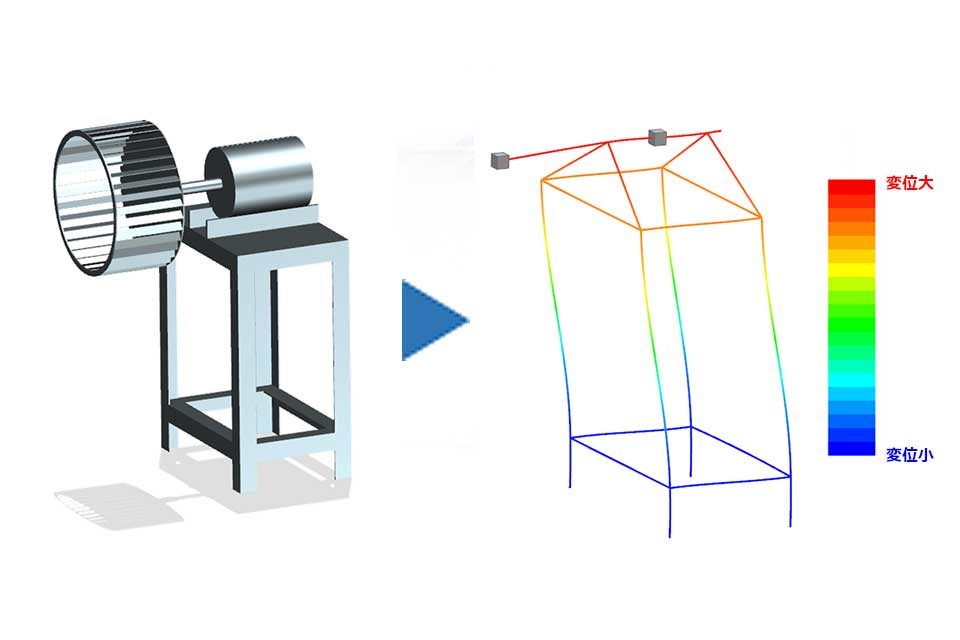
We develop strategic tools that are both realistic and convenient to simulate and clarify any unknown factors based on the analysis of past data and simulation results. Hitachi Plant Construction proposes support tools to develop prediction, management, monitoring, control, and various other systems as well as rebuild, replace, and enhance the operational efficiency of old programs.
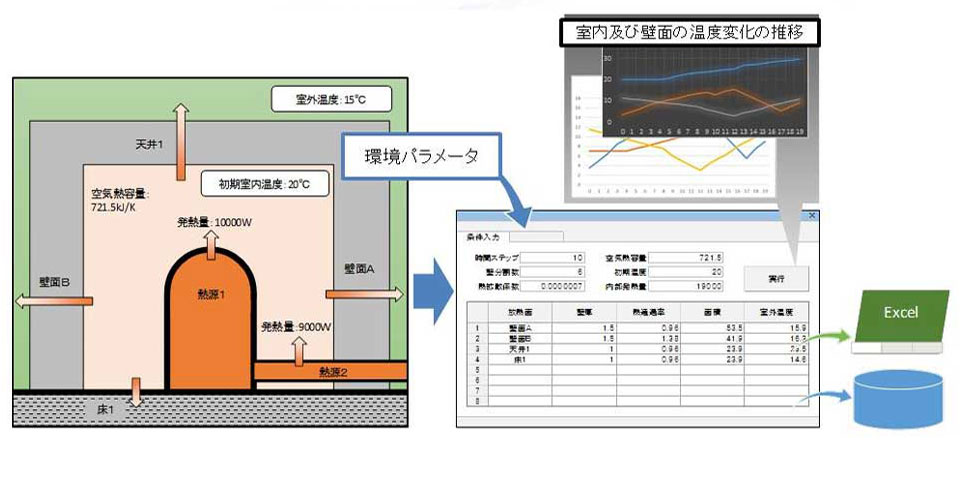
On-site measurements create models according to detailed dimensions and formulate analysis conditions to execute simulations. This is one example of creating countermeasures using simulations by evaluating simulation results to identify the problem points of the current design.
